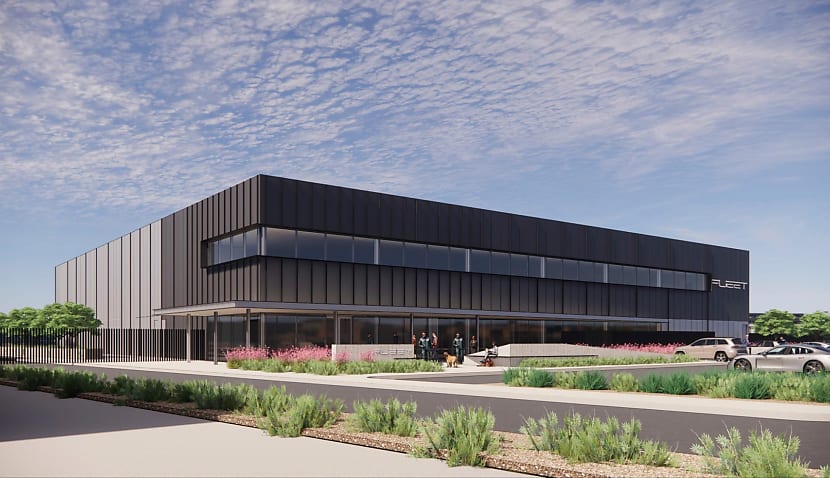The $66 million Australian Space Park was announced in 2021 and meant to host several major industry firms, but the project was quietly shelved two years later after two tenants backed out.
However, Fleet Space Technologies has continued with its plan to be based near the capital’s airport and said its new 5,000-square metre “GHQ” would be based at the Catalyst Park precinct and feature “advanced manufacturing and data centre technologies”.
Fleet Space recently cemented its position as one of Australia’s most valuable space companies after it raised a further $150 million from investors in December last year.
The success has been fuelled by its ExoSphere product, which can help detect minerals underground from space. It effectively allows mining companies to both speed up the hunt for minerals and reduce costs by lowering the need for invasive land surveying.
Already, clients include Rio Tinto, Barrick Gold, and Core Lithium.
“Optimised to drive new-to-world innovation by fusing the latest advances in space, climate and AI technologies, Fleet Space’s GHQ and hyper factory represents a hybrid manufacturing model for frontier technologies needed to achieve decarbonisation and net zero targets,” Fleet Space said.
“Fleet Space’s GHQ will house the company’s research and development labs, 3D printing technologies, data centre infrastructure and central operations for the company’s satellite network in low-Earth orbit and its end-to-end mineral exploration platform, ExoSphere.”
The news comes a day after Fleet Space said it would acquire HiSeis, a Western Australia company that provides mining companies with high-resolution subsurface pictures that help identify mineral deposits.
“To navigate the increasing complexity of drilling down into finer and finer scales, exploration companies come to HiSeis when they need the highest resolution geological picture possible with current technology,” explained Fleet Space.
“Leveraging active seismic solutions, HiSeis sends seismic energy into the ground and measures the energy returned to the surface after bouncing off of geological features deep underground.
“Next, HiSeis uses state-of-the-art processing tools to create a coherent image of the reflected energy to interpret the metre-scale complexity of mineral deposits and assist with drill-targeting selection.
“By folding HiSeis data acquisition methods into the ExoSphere platform, HiSeis’ hard rock seismic data will be rapidly processed, standardised and integrated with other multiphysics datasets, enhancing 3D understanding of mineral systems and data-driven drill targeting while reducing environmental impact at scale.”
Finally, Fleet Space has also recently launched two new satellites – Centauri-7 and Centauri-8 – onboard SpaceX’s huge Transporter 12 rideshare mission.

Adam Thorn
Adam is a journalist who has worked for more than 40 prestigious media brands in the UK and Australia. Since 2005, his varied career has included stints as a reporter, copy editor, feature writer and editor for publications as diverse as Fleet Street newspaper The Sunday Times, fashion bible Jones, media and marketing website Mumbrella as well as lifestyle magazines such as GQ, Woman’s Weekly, Men’s Health and Loaded. He joined Momentum Media in early 2020 and currently writes for Australian Aviation and World of Aviation.

